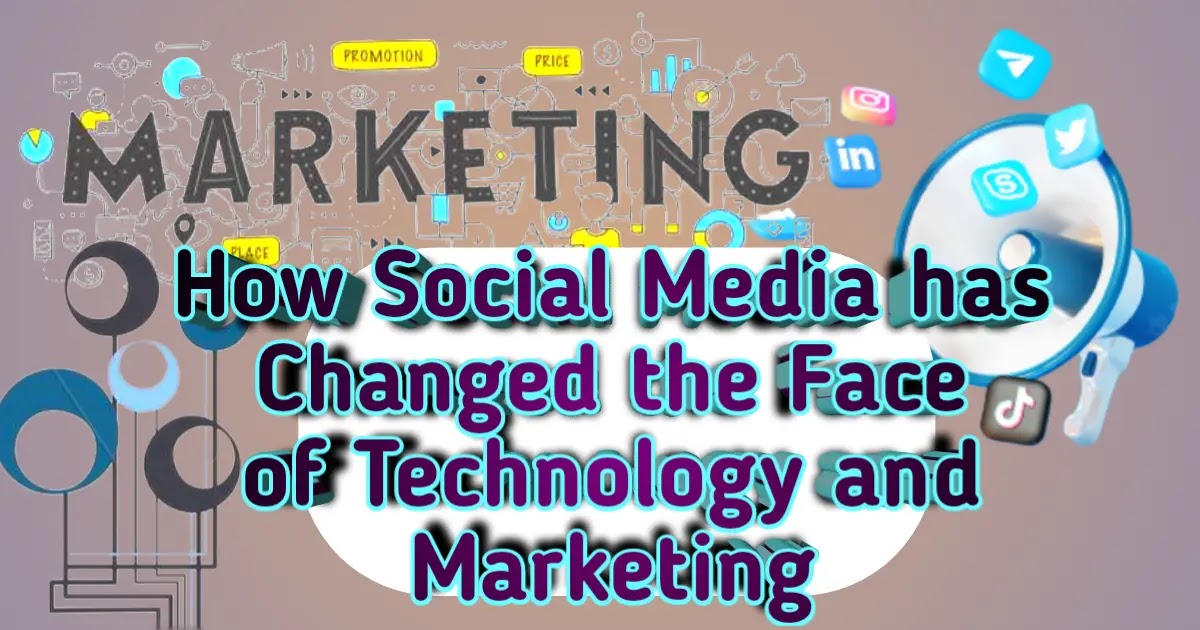The world of technology and marketing isn’t what it used to be just a few years ago. The rapid development of social media and its impact on the world has led to some major changes in how we perceive technology and the way in which brands market their products. Social media has played a major role in this transformation, with new apps and websites being created almost daily.
These sites have made it much easier for businesses to promote their product directly to consumers, without having to go through intermediaries. From YouTube videos to Instagram pictures – social media has changed the face of technology and marketing forever. Keep reading to find out more...
{tocify} $title={Table of Contents}
The Rise of Social Media:
Social media has become an integral part of our lives, with millennials being the most active demographic. According to a recent report, more than half of the millennial population logs into a social media platform at least once a day. This is due to the fact that social media provides a platform for people to connect and express themselves in a way that wasn’t available to previous generations.
With the rise of social media has come an increased demand for more visual content. This is because people are more likely to share an image or GIF rather than reading a lengthy blog post. Although previously, marketing was primarily focused on text-based mediums, with the rise of social media, marketing has become predominantly visual.
A Brief History of Social Media:
Social media has come a long way since its inception. Initially, social media was focused on connecting people in a virtual space, allowing users to interact with one another in a way that was otherwise impossible.
1- As the internet developed, blogging became the most popular social media platform, allowing users to share their ideas, experiences, and thoughts with the world. However, blogging was limited to those who were able to write in an engaging and entertaining manner.
2- Forums provided a space for like-minded individuals to discuss a wide range of topics, and allowed users to create and join groups based on their specific interests.
3- Early forms of video and image-based social media platforms were created, but they weren’t widely adopted until the arrival of Instagram, Snapchat, and later, the now-defunct Vine.
4- With the rise of smartphones, social media apps have become more widely available, with Facebook leading the way as the most popular social media platform.
How has social media changed marketing?
Social media has completely revolutionized marketing. In the past, marketing campaigns were heavily reliant on spending large sums on TV and print advertisements. This type of marketing was incredibly expensive for brands, with the average cost of a 30-second TV ad being around $4 million.
Additionally, there was no way of knowing how effective the ad would be, or how many people would see it. This meant that brands could end up spending a lot of money on ads that were completely ineffective and that no one saw.
With the rise of social media, brands can now promote their products and services directly to consumers, without having to go through intermediaries like TV networks and newspapers, who charge more than social media sites. This has meant that marketing campaigns are now cheaper and more effective than ever before, allowing businesses to reach a wider audience without spending millions.
How has social media changed technology?
Social media has not only revolutionized marketing, but has also changed the way in which we use technology. In the past, people primarily used computers and other digital devices for work and school-related activities.
However, with the rise of social media and the need for consumers to use the internet to share content, computers are now used for leisure purposes too. This has led to increased sales for products like laptops and smartphones, especially among younger generations, who are the most active demographic on social media.
Alongside the increased use of computers and other digital devices, social media has also led to the development of new and more efficient ways of communicating with one another, making communication easier and more accessible than ever before.
The Rise of Visual Content Marketing:
Social media has led to a rise in the demand for visual content. This is because people are more likely to engage with images and GIFs, rather than reading lengthy articles or blog posts. This has been a major change for marketers, who are now expected to produce more visual content.
Although previously, social media was primarily focused on text-based platforms, with the rise of visual content, social media has become predominantly visual.
Video Marketing is King:
Throughout the evolution of social media, one thing has remained constant; video is king. Video has always been a popular form of content, being used by businesses and brands for decades.
However, with the evolution of social media, video has become even more popular. This is due to the fact that videos are a great way for businesses to engage with their customers, and are extremely effective at promoting products.
It’s estimated that businesses that use video to promote their product enjoy a conversion rate that is two times higher than businesses that don’t. This is because a video allows consumers to see what a product looks like, as well as learn more about it and its benefits.
Summing up:
Social media has helped shape the world as we know it, making technology more accessible and bringing brands and customers closer together than ever before.
As the internet continues to evolve, so will social media, with new apps and websites being created almost daily.
Whether you’re a business owner, or a consumer using social media on a daily basis, it’s important to remember that social media is about more than sharing content and liking photos; it’s about forming connections with people and brands that you care about.






0 Comments